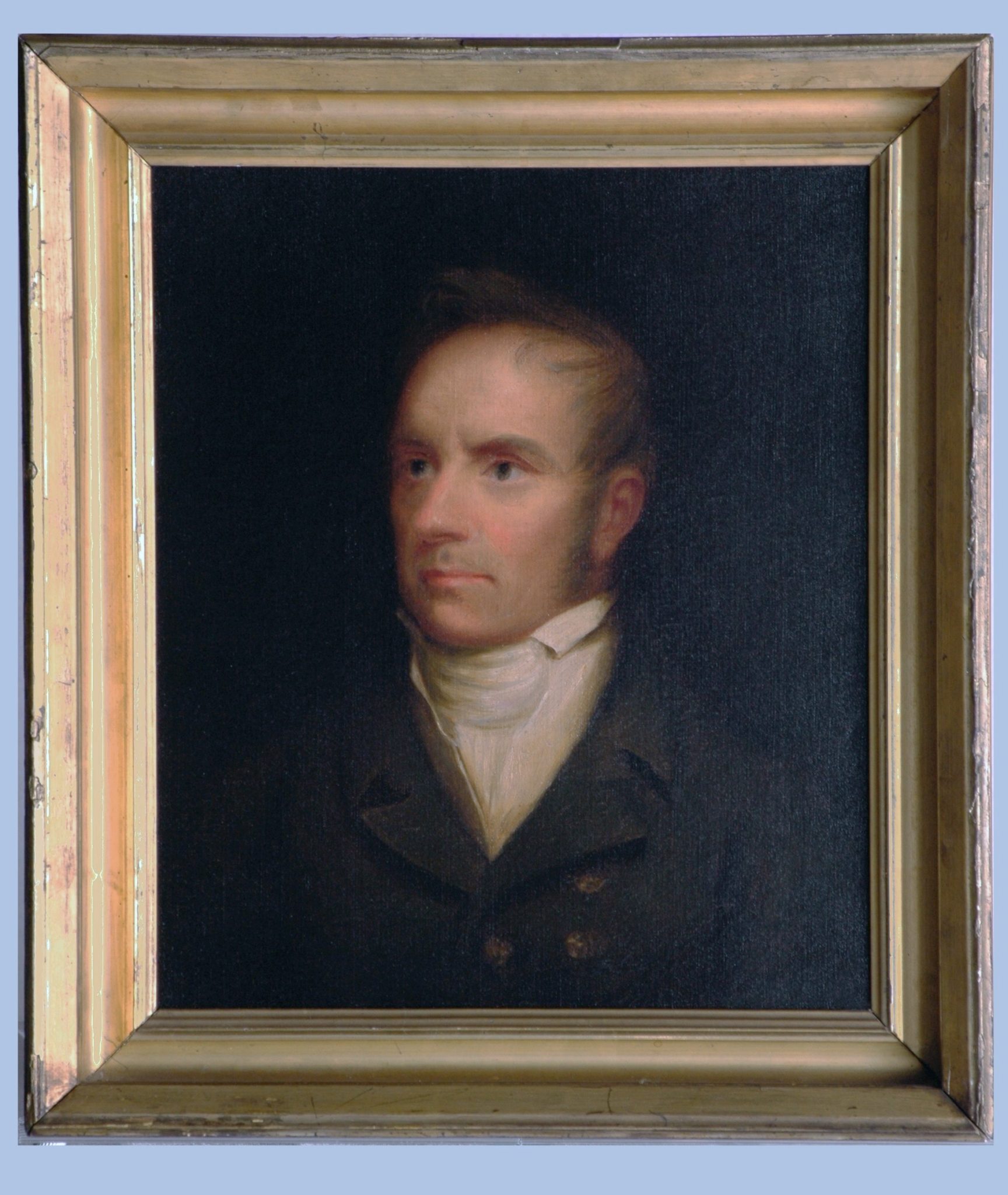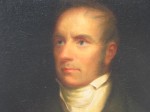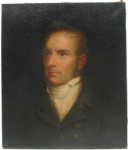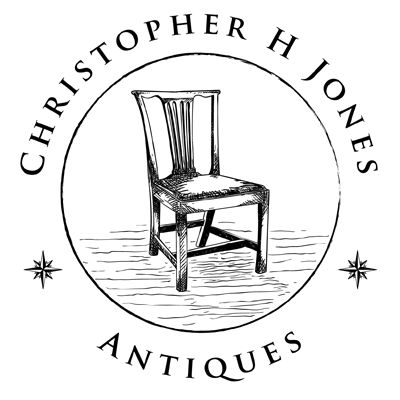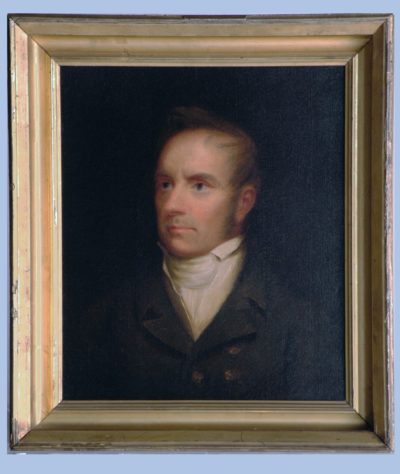 Oil on Canvas
Oil on Canvas
12″ x 20″
Unknown artist
Commentary: “No man was better known in Norfolk and the District than the Hon.Thomas Newton” wrote a local historian shortly after Newton’s death. Nearly one hundred years later this judgment was validated by the Dictionary of American Biography which described Newton as “A quiet, kind, and unostentatious person, he was regarded as Norfolk’s leading citizen.”
Thomas Newton, Jr. (1768-1847) was born in Norfolk, Virginia into one of the region’s most prominent families. Since 1670 generations of Newtons had played prominent roles in Virginia affairs. His ancestors arrived from England around 1670 and quickly became established as merchants and landowners. His great grandfather was the first mayor of Norfolk chosen by the council. His father, who also sometimes signed himself as ‘Jr.’ and with whom the sitter in this portrait is frequently confused, was a leading Virginia revolutionary. The elder Newton was a member of the Committee for Public Safety, House of Burgesses, mayor of Norfolk and colonel of the militia. Merchants, politicians and attorneys, the extended Newton family was deeply involved in the life and commerce of Virginia’s principal port.
Like his father, Thomas Newton, Jr. took an active role in local, state and national affairs. He attended the College of William and Mary, read law in Norfolk, and served in the Virginia House of Delegates from 1796 until 1799. He was a supporter of the ambitious Dismal Swamp canal project, in which George Washington also shared a personal and financial interest. Newton and Washington corresponded on a number of occasions concerning the canal and other mercantile matters. In 1801 Newton took his seat in the U.S. House of Representatives, having been elected as a Jeffersonian Republican, beginning a national political career that would span three decades. Both in the House and at home in Norfolk, Newton was known as a champion of tidewater Virginia’s commercial interests, the state’s ports and improvements to navigation, as well as a strong navy. He also served as the President of the Norfolk branch of the Bank of Virginia.
The painting is unsigned but an old label attached to the stretcher identifies the sitter as Thomas Newton and the artist as Gilbert Stuart. In 1921 the William and Mary Quarterly published an article on the Newton family genealogy that included a photographic reproduction of a portrait of Thomas Newton Jr. that is virtually identical to this portrait. Unsigned but based on research by Virginius Newton, this article provides confirmation of the identity of the sitter in this oil portrait although it unfortunately does not note the owner or artist. In the collection of the Virginia Historical Society is a nineteenth century photograph of a portrait of Thomas Newton, Jr. that seems to be of this oil portrait and may have been the source of the illustration in the aforementioned article. This inscribed photograph provides further confirmation of the identity of the sitter in this oil portrait although no clues as to the identity the owner or artist.
An engraved profile portrait of Newton taken by Saint Memin in 1806 is the only other likeness of Newton located. Made using the physiognotrace technique, the Saint Memin portrait was taken when powdered hair remained stylish and likely predates this oil portrait by several years.
In spite of the label, there is no record of Stuart painting a portrait of Thomas Newton or any member of his family and there is little stylistic evidence to support an attribution of the portrait to Stuart. Cephas Thompson is known to have painted a portrait of George Newton, Thomas’ son, in 1811-1812 during a visit to Norfolk but there is little to indicate that this portrait of Thomas Newton, Jr. was painted by Thompson. More likely, Thomas Newton, Jr. had this portrait taken in Washington after he became a Congressman, possibly by Charles Bird King whose style this portrait resembles.
Thomas Newton, Jr. appears to have been approximately forty years of age at the time this oil portrait was taken indicating it may have been painted circa 1810 to 1815. His hairstyle and the style of his attire support this supposition. The condition and quality of the canvas and the stretcher construction suggest that this portrait could have been painted in the second half of the nineteenth century. It is possible that it is a copy of an earlier portrait, now lost.
Condition: The painting survives in excellent condition, is unlined and is mounted on what appears to be its original wooden stretcher. The metal corner brackets date to the 1880s and may have been added as reinforcements. The surface has been professionally conserved and a protective coating applied.
Sold
Additional Photos:
In Detail
Without Frame

